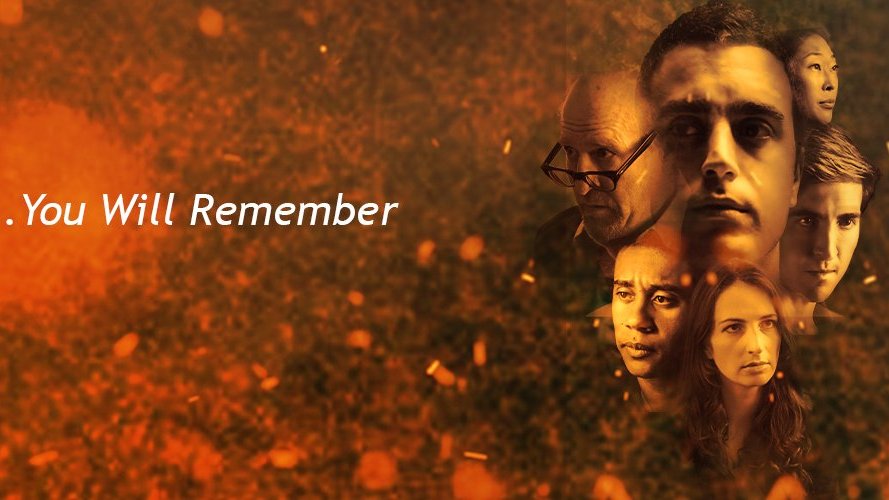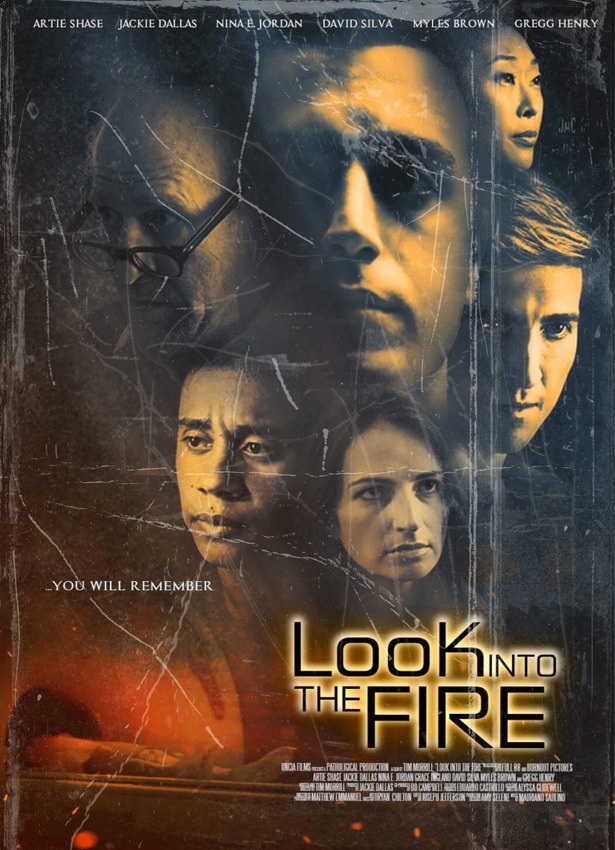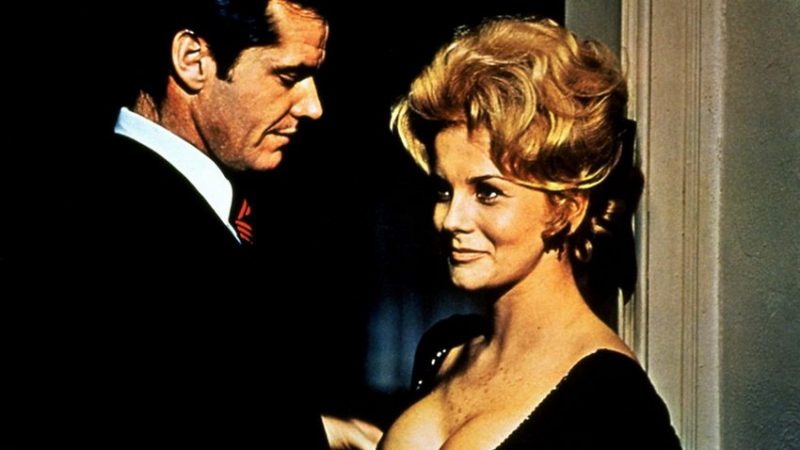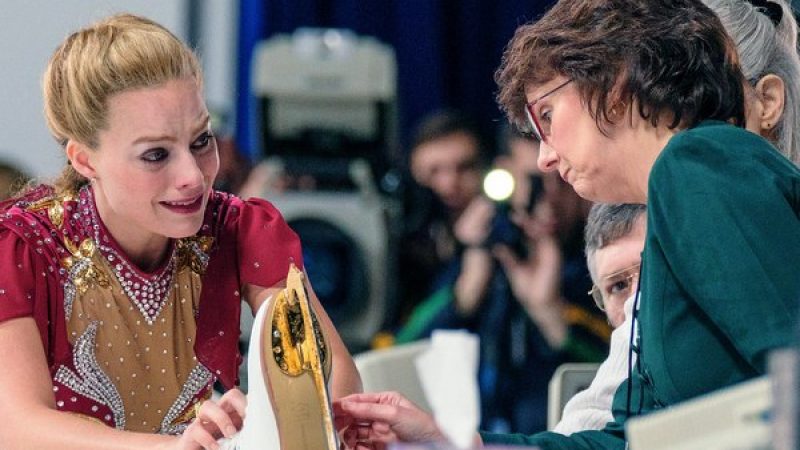
REVIEW: by Peter Nichols | 3 of 5 Stars
Logline
Adam, a neuropsychology graduate student, seeks to impress his professor by concocting an experiment that unwittingly unlocks repressed horrific memories that send him on a mission to find the truth of his past.
Introduction
The opening credits play over a short film, with an intense story. So, brace yourself. It quickly plunges audiences into fringe (unknown) science, and it doesn’t shy away. I think, the opening image can be achieved in a sentence or shot or montage. However, the film has a great story idea; which is original, courageous and visionary. A glimpse into the mind of Tim Morrill (Director), he is definite, daring and unconventional. Look into the fire is a film with a big idea. It is engaging and it delivers thrilling entertainment.
Review
The film sets up a premise, “to photograph the human thought“. It shoots audiences a big promise. Then what follows is a psychological journey into the mind of the protagonist, Adam Spencer. While it quietly identifies morals of this discovery, it neglects to explore them. So, this is not a moral story, it is a crime genre; a sub genre of the crime genre, the psychological thriller. I guess the morals of this big idea can serve another movie premise. At their first attempt, an unconscious volunteer exits an MRI scanner asleep, but hypnotized. He unconsciously utters a previous memory. Adam doesn’t quite notice. He spends that evening swapping stories with Isabella (girlfriend). Who reluctantly agrees to his ground-breaking idea. The film setup is good, the characters are well defined. It sets up a foreshadowing for an inciting incident; a dramatic replica of the volunteer in an MRI machine.
Adam researches throughout the night, at breakfast, he explains his breakthrough to his teammates. After class, Prof. Hirsh quizzes Adam and Samantha Conroy on their project; he had noticed Adam buried in his books, rather than in his lecture. When volunteers fail the team, Adam becomes patient zero. On exiting the MRI, Adam shocks his teammates as he displays non-recognition; an after effect of losing part of his short-term memory, he then fumes about a memory of a cabin in the woods. An idea a teammate fed him from his keyholder insignia. The film’s narrative deepens into “Alice (Adam) falling down the rabbit hole”. A subjective camera, or a close-up could heighten such a dramatic moment with a narrator: the twain will reveal Adam’s thoughts. The audience have no way into Adam’s thoughts, save his reactions to the physical elements in his environment. In any case, we now have our “inciting incident”.
The experiment had worked. It recalled a memory that will now hunt Adam. It then pivots the story directly into a crime plot, thickening the plot. Samantha walks Adam home by GPS. Isabella breaks-up with Adam under the misconception of cheating and memory loss. Adam’s dreams repeats with more information about the fire place in the woods. Next morning, Sam finds Adam unresponsive and admits him into Baywood Hospital. Later, Janet (Adam’s stepsister) discharges him, while she rudely dismisses Sam. Adam recuperates at Janet’s, but that night Adam dreams of the fire place with his feet covered in flowing blood. “The memory now becomes a subplot that drives the narrative. Ingenious”.
Exclusive Scene – “The Plan” from the Official Trailer for Look into the Fire
After a few day after Adam notices Janet drugs him. Later, Adam sneaks to email his teammates for a rescue. He steals a polaroid off Janet’s desk, Google’s the name “woods” on the polaroid and finds an article, ‘murder at cabin’. A look-a-like cabin from his dreams. Adam attempts an escape, yet trips and falls; hitting his head hard. The dream recurs; a murder at a cottage. This time he recalls a man (step-father) hand a boy an axe. Later, Janet finds Adam bleeding, and returns him into her house. Both, quarrel about, “why his mother left“. Eventually, Janet bursts out sad, that Adam killed his own mother – something she’s been keeping away from him or why he has been on anti-depressants since childhood. That night Sam and Adam’s teammates rescue Adam from Janet’s, only after a violent confrontation. The audience witness the first action scene of the movie, a refreshing experience which opens up audience expectation for yet more.
Adam talks with Prof. Hirsh after class, who is curious of the two weeks Adam was absent from class. A subjective moment indicates an “alternate reality” and not a reality, proposing the idea that Adam may be imagining the moment. This is one great moment the audience gets a glimpse of the protagonists thoughts. I had hoped to see more of such moments to come. Back at Adam’s place, Isabella caters to an unconscious Janet, who had struggled with Adam earlier before hitting her head and falling unconscious. At night, his dreams are progressive and clearer every other night; Adam dreams of trying to hit his step-father with an axe. Later, he explains the break up with Isabella. Not before he leaves her behind for a team meeting.
After requesting a repeat experiment, the team disagrees with Adam. Seth exits, but Jordan joins up. The new team repeats the experiment with an invented brain converter. Adam’s thoughts now come on screen as primetime TV: the cabin, lewd thoughts etc. With the dreams coming on stronger, Adam is distracted in class curious to prove if he killed his mother or not. Sam walks Adam home, then makes a move on him because she is privy to his fantasies (an immoral feedback from the experiment) about her, but Adam rejects Sam. Isabella quits Adam’s with Janet awake, claiming Janet told her everything. The next day the team finally splits up: from mishaps, embarrassments and recklessness leaving Adam alone in his dilemma. It is a dark night of the soul moment for Adam. Now he is alone, and must find the truth about his mother’s death himself. But how? We witness a plot-point into the final act.
Adam drugs Janet with a coffee, drives her off to the cabin in the woods. Janet tells Adam about the murder. Adam visits Cabin 6, exploring his memory. Adam recalls his mother’s death. Returning from cabin 6, Janet hides, then stabs him to escape him. Adam wakes up in a solitary confinement. Sam is now his Dr. She tells him about a tumor in his brain. Prof. Hirsh, Sam and teammates leave Adam’s file in a docket at his door. Great twist, and satisfying ending.
Conclusion
Look into the Fire boasts of very well defined characters. It presents great moments. It is a complete plot of a crime thriller mixed with a psychological perspective. The ending has a good kicker, ending effectively. It presents a great use of production design, sound design, continuity, but fall short of a great spectacle. “Look into the Fire” has all the nuts and bolts of a film in there, they all just need tightening.
I had hoped that the originality or fluency of the story idea, (which picked my interest), would carry over into the film, but it did not do so adequately. I think it fell a little short of influence on its audience, me. The challenge with tacking a story based on a fringe science is that it is a multiple-genre approach. It is not only, just sci-fi, and drama, but it needs more genre to represent its story idea on film, to ground it in real life situations or circumstance.
Now, Tim did approach “Look into the Fire” as a multiple-genre. He explores the genres of “sci-fi”, “crime”, “love”, “thriller” which are very big themes in the blockbuster category. The same themes James Cameron explores for his Avatar films.
The film is complete with the tenets of filmmaking. A main spine or theme or through-line. The main protagonist is defined, so are his allies or support characters. Although the character wants and needs are intertwined they are weakly presented. Look into the Fire is complete with circumstance, dramatic and narrative blocks, dynamic relationships, expectations, actions, acting beats and scene fulcrum. It only needs ramping up to make the audience distinguish between objective moments and subjective moments.

Writer & Directed: Tim Morrill
Cast
Gregg Henry as Professor Hirsh
Desirée Rogers as Hospital Admin
Jackie Dallas as Samantha Conroy
Jonez Cain as Nurse Baker
David Massil as Doctor
Grace Ingland as Isabella
Nina E. Jordan as Janet Worth
Artie Shase as Adam Spencer
Susie Colombo Sadeghi as Mom
Myles Brown as Seth
Joanna Cretella as Jordan
Randi Acton as Grandma
Produced by: Bo! Campbell, Eduardo Castrillo, James Coffey, Isaac Dallas, Jackie Dallas, David Massil, Richard Pool, Samuel Miles Purcell, Dylan Rhodes, Micheal Robinson, James Stout, Arun Sundaram, Ashany Sundaram
Cinematography: Matt Emmanuel
Film Editing: Joe Jefferson
Set Design: Oryan Chilton, Amelia Selene
Art Direction: Oryan Chilton
Assistant Director: Jackie Dallas, Alyssa Glidewell
Sound Department: Bo! Campbell
Special Effects: Michael Monaghan
Stunts: Bridger Fox
Gaffer: Lance Gegner, Ryan Owen Nelson, Kevin Willing
First Assistant Camera: Ever Heredia
Costume and Wardrobe: Amelia Selene
Music Production Coordinator: Silvina Slatopolsky
Script Supervisor: Rebecca Beardslee
Tell us what you think of “Look into the Fire” review. What do you think of it? What ideas did you get? Do you have any suggestions? Or did it help you? Let’s have your comments below and/or on Facebook or Instagram! Or join me on Twitter.
FILM REVIEWS
Thelma Adams: Why Tyler Perry Earns the Title of Hollywood’s Last Auteur
Tyler Perry is the critical elephant in the room as Hollywood elites discuss diversity.
Thelma Adams: Mike Nichols Had ‘Carnal Knowledge’
When Carnal Knowledge (Mike Nichols) came out in 1971, I was twelve. The name sent shivers up my spine.
Movie Review: I, Tonya. Victoria Alexander
REVIEW: Film Critic Victoria Alexander
Movie Review: Star Wars: The Last Jedi. Victoria Alexander
REVIEW: Film Critic Victoria Alexander






